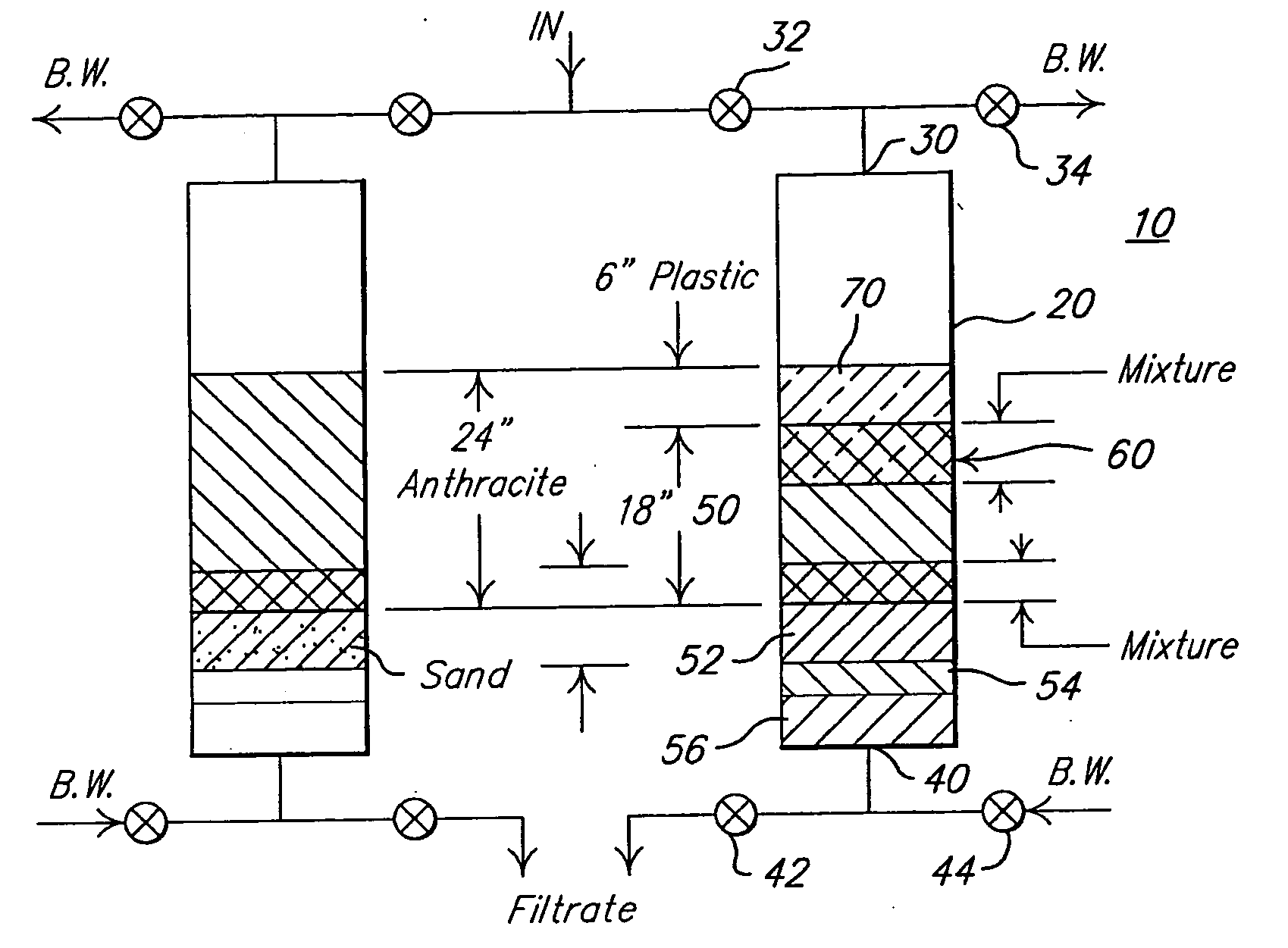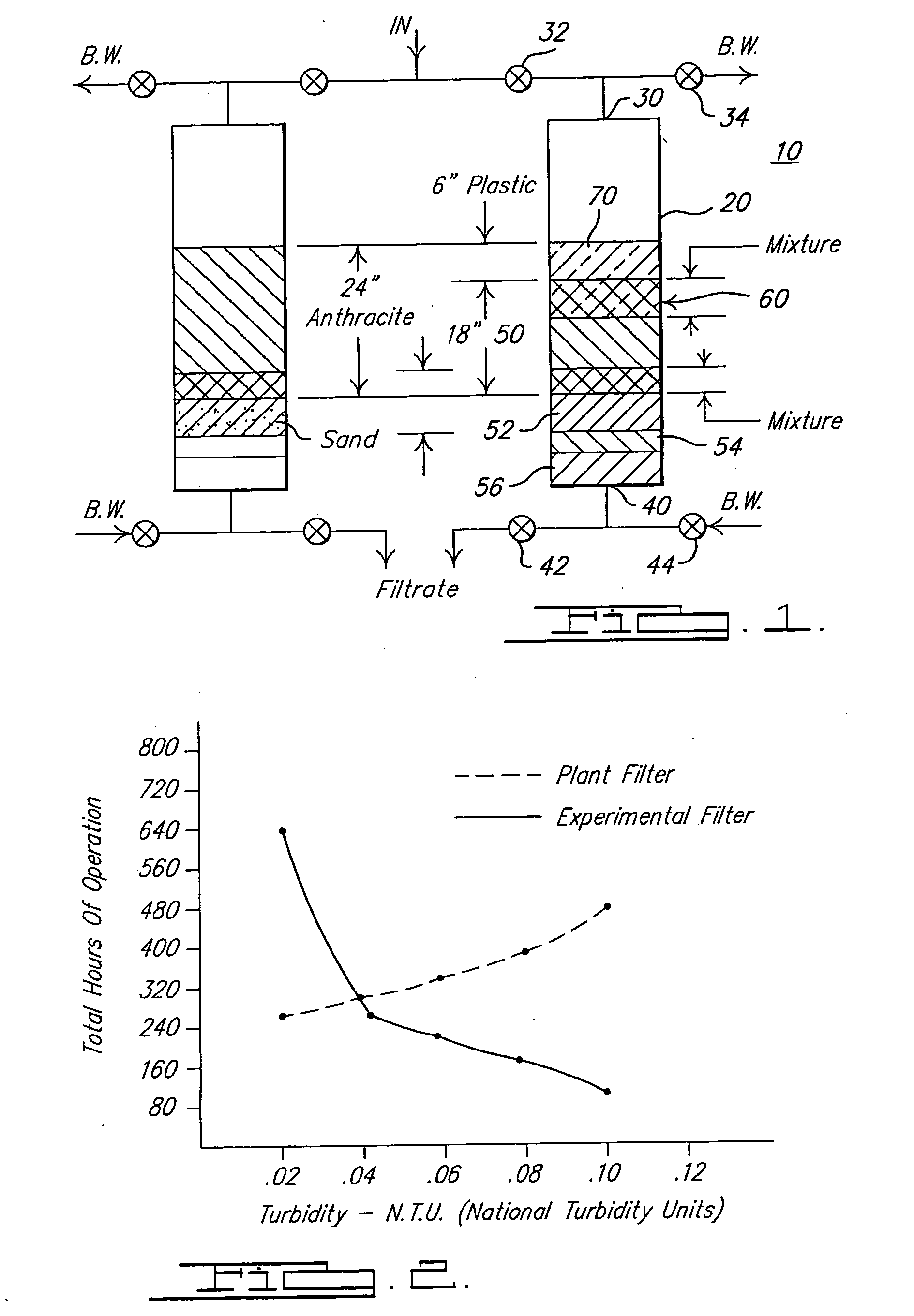Deep bed filter
a filter and deep bed technology, applied in the field of deep bed filtering systems, can solve the problems of reversing the media grading order, ineffective addition of filtration media to existing deep bed filters to solve the above problems, and affecting the efficiency of deep bed filters
- Summary
- Abstract
- Description
- Claims
- Application Information
AI Technical Summary
Benefits of technology
Problems solved by technology
Method used
Image
Examples
Embodiment Construction
[0009] Referring now to FIG. 1 and in accordance with a preferred embodiment of the instant invention an improved deep bed filter 10 comprises a vessel 20 having a fluid inlet 30 and a fluid outlet 40. The vessel 20 may be any known in the art filter container or containment area capable of accepting a contaminant to be filtered. The inlet 30 supplies contaminated fluid to the filter 10, and is in fluid communication with an inlet valve 32 and an outlet backwash valve 34. Similarly, the outlet 40 is in fluid communication with both an outlet valve 42 and an inlet backwash valve 44. When filter 10 backwashing is desired, both the inlet and outlet valves 32, and 42 respectively, are closed, and both backwash valves 34 and 44 are opened, to allow fluid to be pumped from the bottom of the filter 10 to the top thereof.
[0010] The vessel 20 contains a plurality of layers of filter media including a layer of sand 50 over which is placed a layer of polymeric particles 70. The filter media t...
PUM
| Property | Measurement | Unit |
|---|---|---|
| Length | aaaaa | aaaaa |
| Length | aaaaa | aaaaa |
| Diameter | aaaaa | aaaaa |
Abstract
Description
Claims
Application Information
 Login to View More
Login to View More - R&D
- Intellectual Property
- Life Sciences
- Materials
- Tech Scout
- Unparalleled Data Quality
- Higher Quality Content
- 60% Fewer Hallucinations
Browse by: Latest US Patents, China's latest patents, Technical Efficacy Thesaurus, Application Domain, Technology Topic, Popular Technical Reports.
© 2025 PatSnap. All rights reserved.Legal|Privacy policy|Modern Slavery Act Transparency Statement|Sitemap|About US| Contact US: help@patsnap.com


